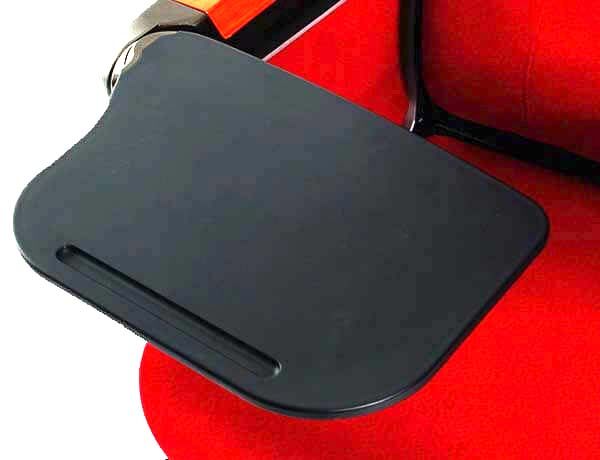When curating fixtures and facilities for your space, you always want to ensure you pay great attention to detail. You invest so much in ensuring everything in your area is up to par. A well-constructed auditorium must have great structural integrity, wind flow, acoustics, ergonomics, and whatnot. On top of that, you must also pay attention to the kinds of chairs you’re outfitting your auditorium with. Now, auditorium seating might not be something that a lot of people pay attention to. But that’s a mistake.
You always have to ensure you source your chairs from a reputable auditorium seating manufacturer that knows what they’re doing. Otherwise, you end up compromising the overall comfort and experience of your auditorium’s guests when you host them with cheap and lackluster seats. Now, if you’re utterly clueless about choosing the right hall seating fixtures for your space, don’t fret. This article will help guide you through that process to ensure you won’t regret making a decision.
Things to Keep in Mind When Selecting Auditorium Seating
Remember that auditorium seating fixtures are used for large conference rooms, government halls, dance theatres, concert venues, and other venues. Auditorium seating fixtures typically comprise four essential parts: seats, armrests, backrests, and standing legs. Those are the four crucial parts of a standard auditorium seating fixture. Usually, the standing legs are integrated with firmly installed handrails to ensure the chair is in a fixed position. Usually, these installations are made out of steel, wooden, or plastic structures.
Related Article: A Definitive Guide to Choosing Auditorium Seating





Depending on your auditorium’s nature, you must be mindful of how you select your chairs. For instance, if your auditorium is more of a government hall, the chairs must match the function. If it’s a concert or entertainment hall, you have to adjust accordingly. Match not just the functionality but also the designs of your chair to the overall space. For more professional settings, go for more neutral colors and sturdier materials. For entertainment venues, there is more freedom and flexibility to play around with colors, materials, and fabrics.
Also, be mindful of the nature of your auditorium’s floors. The auditorium setting typically needs to be installed into the ground with screws. If you have cement floors, this isn’t much of a problem. However, things might get complicated if you have tile floors or flooring made of unique materials. Your supplier should be able to adjust depending on the kind of flooring you have.

The backrest of a chair is very important when determining ergonomics and comfort. If a backrest is loosely installed, it can become precarious. It might even make a lot of noise and compromise the event experience. When sitting in your auditorium, you want to pay attention to these minor details.

Aside from the backrest, the seat cushion is the primary point of contact between the chair and the human body. So, it should go without saying that you also need to pay attention to the construction of your seat cushion. Typically, this part of the seat tends to drive up the cost. Generally speaking, the auditorium seating should be made up of a high-density and resilient sponge material. This is to ensure optimal comfort and durability of the seat cushion.

Another matter you need to pay attention to when sourcing your chairs is the quality of the standing legs. Remember that the standing legs of a chair bear the most weight among all the parts of the chair. So, you want to go with a sturdy and reliable material. It can become very costly in the long run to constantly repair or replace chairs with faulty standing legs. Go for cold-rolled steel or aluminum alloy materials. This way, you are assured of a quality product that will last a long time.

Then, there is the matter of fabrics. The general industry practice is to employ the use of linen. The reason why linen is so popular is that it is durable, dirt-resistant, and breathable. Some also opt for some kind of leather or synthetic leather material for their chairs. However, this kind of material might not be the best choice. It might look and feel premium, but it’s also prone to a lot of wear and tear. Also, it’s not the most breathable fabric out there.

You can also look into the accessorization of your auditorium seating fixture. For instance, in movie theatres, cup holders are absolute necessities. In educational halls, a writing table might be a suitable implement. Again, it all depends on the nature of the event hall. Match your chair to the functionality of your space.
When it comes to ensuring optimal comfort and experience for your auditorium’s visitors, you have to pay a lot of attention to every facet of construction. This means the stage must be big and wide enough for everyone to see. The acoustics have to be manipulated in such a way that optimizes the audible experience of the theatre. Proper ventilation and airflow should ensure that it doesn’t get too stuffy and hot. Lighting fixtures must be installed correctly to bring more life and brightness to the stage. And lastly, chairs must always be constructed and installed so that theatre-goers stay comfortable at all times.
Like shoes, the best kinds of chairs are the ones you don’t even notice are there. You know a chair is problematic when you’re constantly fixating on how uncomfortable it is instead of enjoying the spectacle. A good chair should only supplement and enhance a person’s sitting experience. It should not serve as a distraction or, worse, a source of discomfort. And this is why you need to pay great attention to how you select the chairs for your auditorium.
WhatsApp us